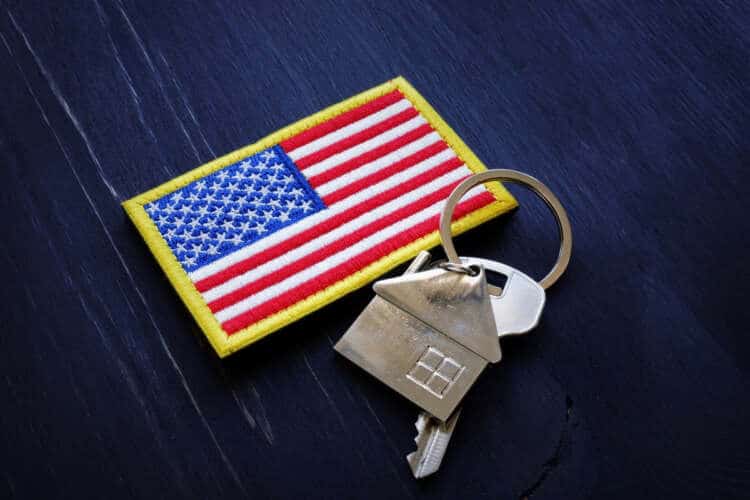How Does the VA Loan One-time Restoration of Entitlement Work?
Updated: April 27, 2023
Due to the VA loan’s outstanding terms, veterans and military members often ask how the VA loan’s one-time restoration of entitlement works. In other words, how can eligible borrowers use this one-time restoration to access their VA loan benefits again? In this article, we’ll explain how to use this one-time restoration of entitlement, including:
- VA Loan Overview
- VA Loan Entitlement
- VA Loan Entitlement Restoration Prerequisites
- Completing the VA Loan One-time Restoration of Entitlement
- Final Thoughts
VA Loan Overview
The US government first offered veterans a path to homeownership with the Servicemen’s Readjustment Act of 1944, a bill meant to ease the transition of World War II veterans back into society. Today, the Department of Veterans Affairs administers the VA home loan program, the modern version of that 1944 benefit.
And, the VA loan provides veteran borrowers the following outstanding benefits, all of which are essentially unmatched in conventional mortgage products:
- No down payment required
- Low interest rates
- No private mortgage insurance, or PMI, required
- Access to the VA’s IRRRL program, or “streamline” refinance
Veterans should note the purpose of the VA loan program is fostering homeownership, not providing veterans an easy strategy for building investment property portfolios. This overarching purpose serves as background to understanding how the VA’s one-time restoration of VA loan entitlement works, which we’ll discuss in the next few sections.
VA Loan Entitlement
The VA doesn’t actually lend money. Rather, the VA guarantees a portion of the VA loans provided by banks and other private lenders. More precisely, the VA guarantees 25% of VA loans, currently up to $127,600 (though this number is annually adjusted, and larger in some higher cost of living areas). As such, without needing a down payment, eligible veterans can borrow up to $510,400 ($127,600 entitlement x 4).
When a veteran uses the VA loan, a portion of his or her entitlement becomes tied up in the mortgage. For example, if a veteran purchases a $200,000 home, $50,000 of entitlement is committed ($200,000 x 25%). But, as discussed, total entitlement is $127,600 ($510,400 x 25%). In this scenario:
- Total guaranteed entitlement: $127,600
- Minus 1st loan entitlement: -$50,000
- Equals remaining entitlement: $77,600
And, with $77,600 in entitlement remaining, the veteran in this example would have enough entitlement remaining to purchase a $310,400 ($77,600 x 4) home.
But, what if the veteran moves and wants to keep this original home, and use the VA loan to purchase another home for more than $310,400? To accomplish a subsequent purchase like this, veterans need to restore their original entitlement.
VA Loan Entitlement Restoration Prerequisites
While veterans can restore their VA loan entitlement to use the loan a second time (which we’ll discuss next), they first need to meet certain prerequisites. Typically, to restore entitlement, veterans need to fully repay the original VA loan and sell that initial property (once again, this requirement centers on the VA loan program supporting homeownership, not rental property acquisition).
The VA offers a one-time option to fully restore VA loan entitlement without selling the original property. This option provides veterans an outstanding opportunity to convert a primary home into a vacation or rental property while still accessing the above VA loan benefits to purchase a new, primary home.
To pursue this option, veterans need to meet the following requirements:
- Completely pay off the original VA loan (this can be done by actually paying the loan in full or by refinancing into a conventional mortgage).
- Commit to only restoring their VA loan entitlement one time (as stated, veterans need to understand that they can only complete this restoration once).
- Meet lender qualifications for a VA loan (simply having VA entitlement doesn’t guarantee loan approval, as veterans still need to meet lender credit, income, and debt requirements).
NOTE: If a veteran refinances the original VA loan to a conventional loan and converts the first property into a rental, lenders will typically not include that rental income in the borrower’s debt-to-income ratio without a demonstrated history as a landlord. However, some lenders will include this income if the veteran signs a contract with a property management company to manage the original property.
Completing the VA Loan One-time Restoration of Entitlement
Having outlined the above information, actually completing the VA loan one-time restoration of entitlement is actually a fairly straightforward process. Veterans simply need to complete the following steps:
- Step 1: Pay off the VA loan on the original property, either by paying the loan in full or refinancing it into a conventional loan product.
- Step 2: Request the actual one-time restoration of entitlement by filling out a Request for a Certificate of Eligibility, VA Form 26-1880 and sending it to the VA regional loan center for your state.
- Step 3: Submit your updated COE to a lender and apply for a subsequent VA loan, making sure that you meet all of the lender’s other credit, debt, and income requirements.
This Certificate of Eligibility, or COE, serves as a veteran’s proof of remaining VA loan entitlement. And, once you complete this one-time restoration, your COE will always have a notation about it. Consequently, to restore your VA loan entitlement again, the Department of Veterans Affairs will mandate that you sell all properties purchased with a VA loan.
Veterans should consider this subsequent “must-sell” clause prior to exercising their one-time restoration of entitlement. While this serves as an outstanding option to convert a home into a rental property, veterans should also consider other loan options and strategies prior to committing to the one-time restoration. As the name clearly indicates, veterans can only do this once.
Most Popular VA Loans and Mortgages Articles

VA Home Loan Guide

VA Loan Calculator

How to Refinance a VA Loan

VA Loan Certificate of Eligibility (COE)

2024 VA Loan Limits by County

Best VA Loan Lenders































































